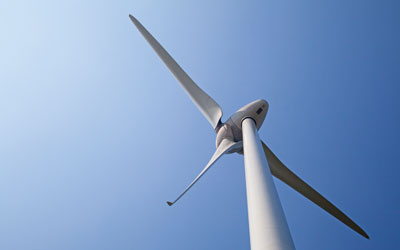Temperature control strategies for smarter energy use in refrigerated warehouses
- Like
- Digg
- Del
- Tumblr
- VKontakte
- Buffer
- Love This
- Odnoklassniki
- Meneame
- Blogger
- Amazon
- Yahoo Mail
- Gmail
- AOL
- Newsvine
- HackerNews
- Evernote
- MySpace
- Mail.ru
- Viadeo
- Line
- Comments
- Yummly
- SMS
- Viber
- Telegram
- Subscribe
- Skype
- Facebook Messenger
- Kakao
- LiveJournal
- Yammer
- Edgar
- Fintel
- Mix
- Instapaper
- Copy Link
Posted: 1 September 2015 | Kostadin Fikiin, Refrigeration Science and Technology, Technical University of Sofia (Bulgaria), Chairman of the EHEDG Working Group ‘Food Refrigeration Equipment’ | 1 comment
Temperature is generally considered as the single most important factor for determining food quality and safety. This definition means that a lot of other process parameters or storage conditions may more or less influence upon the food product in different industrial situations, but temperature is the main physical value as its impact is always enormous.


Hence, we will never be wrong to say that “proper temperature control, temperature control and again temperature control” is the prime simple receipt for the success of every food processor, store operator or retailer. The temperature-controlled cold supply chain for refrigerated processing, storage, distribution, retail and household handling of foods is therefore of paramount importance for guaranteeing safety, quality, wholesomeness and extended shelf-life of perishable commodities.
Reducing energy consumption throughout the cold chain (and more specifically during cold storage) is vital since about 40% of the global food output requires refrigeration, while 17% of the electricity consumed worldwide is used for refrigeration and air conditioning. Proper temperature control is a key factor for achieving an economical use of energy in the cold storage sector.
From the viewpoint of product safety and quality, the ‘Golden Rule’ is that storage temperature must be maintained as constant as possible. In that context, numerous product-specific data for the practical storage life of different chilled and frozen commodities, kept at the well-known constant storage temperatures, are published in the specialised literature. However, the ‘Golden Rules’ and strategies for energy savings might often contradict the safety and quality related requirements. For instance, the so-called ‘passive’ Thermal Energy Storage (TES) involves artificial temperature fluctuations to accumulate cold in the refrigerated products, when excessive and cheap energy is available, and to release this accumulated energy at the time of peak loads, when the energy demand is higher. Such approaches are very intuitive and proven in real practice for many years. The need for additional investment to build real ‘active’ TES systems is thus avoided.
Recent achievements in information technologies and automatics make it possible to implement sophisticated temperature control strategies for intelligent energy use. This article focuses on a comparatively simple strategy called ‘Night Wind’ after the name of the EU Project ‘Grid Architecture for Wind Power Production with Energy Storage through Load Shifting in Refrigerated Warehouses’ (Night Wind), where it was developed 7. The ‘Night Wind’ strategy combines the advantages of using a ‘passive’ TES principle and a way to involve renewable wind energy when covering the electricity demand of cold stores on a local, regional or Europe-wide level 7-14. Similar strategies have been applied outside of Europe as well 2,4,6.
The ‘Night Wind’ concept
Distributed renewable energy resources (such as wind and solar energy) have a substantial potential for energy supplies and reducing carbon emissions but have been difficult to integrate so far because of their intermittent contribution. The integration of wind power into the nationwide and transnational energy supply systems becomes more complicated with increasing the production capacity of installed wind turbines, because of the mismatch of supply and demand of energy. The wind energy is generated at random times, whereas the energy use pattern shows distinct demand peaks during day time and office hours, and low consumption during the night. Refrigerated warehouses are constant power consumers (day and night), where electricity is converted by the refrigeration plant into artificial cold stored in chilled or frozen products. The use of a refrigerated warehouse for storing renewable wind energy affords economic benefits from the cost difference between low and peak-hour electricity tariffs and permits to offset undesired peaks in the electrical grid, as shown in Figure 1 7, 9-14.
Energy is stored by producing more cold than necessary (thereby refrigerating the products below the prescribed temperatures), while turning off the refrigeration plant releases virtual energy matching the difference between the average and the zero cold store demands (and letting foods warm up back to the recommended temperatures of storage). For example, if the temperature of stored frozen products throughout EU is permitted to vary by 1 °C only, all refrigerated warehouses can act as a giant battery on the grid – they could store twice the EU’s wind power production, as estimated for 2010 by Van der Sluis 7. While balancing the wind power production by fossil fuel power generation is inefficient, such balancing by refrigerated warehouse load management is a sustainable (environmentally friendly and cost effective) alternative with reduced running costs for the cold chain operators 7-14.
Quality attributes of frozen foods undergoing temperature fluctuations
(freeze-thaw cycles)
Special attention is to be paid to the refrigerated food quality as affected by the ‘Night Wind’ technology. For that purpose, quality attributes of selected frozen foods undergoing temperature fluctuations (freeze-thaw cycles) have been investigated.
Parallel tests have been conducted with 10 different food samples of identical type, shape and size, stored during eight months at constant and variable temperature regimes 9-14. The samples – meat (bacon), fish (smoked Mackerel fillet), bakeries (fruit pie), fruit (strawberries), vegetables (tomatoes, melons and peppers), potatoes (blanched/semi-grilled French fries) and ice cream have been wrapped in plastic bags and boxes, evacuated and frozen at a constant air temperature of
–19 °С as well as at a variable temperature (with day-night cycles) ranging from –16/–18 °С down to –26/–28 °С, as shown in Figures 2 and 3 9-14.
After three days, and two, four, six and eight months of frozen storage, the samples have been thawed in air ambience up to a temperature in the product centre of 20-22 °С. Thus, a number of quality attributes have periodically been evaluated – texture (by penetrometric measurements), colour (by the method of Gardner) and drip losses. Sensory evaluation has also been carried out (with the aid of a taste panel) to estimate the product appearance, colour, flavour and consistency. Data obtained has been summarised in the form of tables, graphs and predictive equations 9-14.
This study revealed that the quality of frozen products subject to fluctuations of storage temperature is generally acceptable but, as expected, inferior in comparison with food maintained at a constant temperature (in compliance with the established food refrigeration standards and good practices). However, for many products this quality decay is rather negligible and can be offset by the obvious economic and sustainability-related advantages of the emerging ‘Night Wind’ technology 9-14. In that context, potatoes (French fries) appeared to be the most robust ‘Night Wind friendly’ product 9-14.
Decision support and automated control
The aforementioned ‘Night Wind’ concept needs optimal strategies for fine control of the cold store operation, based on economic criteria (e.g. balance between the instantaneous wind energy production and actual electricity demand, predicted dynamic/stochastic variations of electricity tariffs on the stock market, etc.), along with engineering and food quality requirements. For that purpose, a control system (Figure 4) has been created to manage in real time the wind power integration, depending on the store refrigeration demand, the intermittent availability of wind energy, the stepwise or stochastic variations of electricity prices on the stock market (Table 2, and Figure 5), and other factors 7, 9-14.
The control system can serve: (i) as a decision-support information system to assist the cold chain operator when taking decisions on the most profitable pattern of energy use, or (ii) as an expert system embedded in the hardware and software for fully automated control of the store.
Economic benefit and precautions
The ‘Night Wind’ temperature control strategy has been demonstrated at the store of Partner Logistics BV (at Bergen op Zoom, the Netherlands) – one of the largest frozen food stores in Europe (for 680,000 pallets). This refrigerated warehouse stores basically French fries, whose quality remains almost the same after daily temperature fluctuations and freeze-thaw cycles. Van der Sluis 7 reported a very substantial real profit from implementing the ‘Night Wind’ technology at Partner Logistics.
Let us remind the reader that load-shifting TES strategies do not save energy as a whole, but dramatically reduce the peak energy loads, save money and balance the electricity grids, thereby contributing to the overall energy related sustainability of the economy.
If you want to try the ‘Night Wind’ technology at your own cold store, this should be made with extremely high attention, care, due diligence and compliance with the established food standards and regulations. Please be aware, that small errors might badly damage all your stored produce. The best way is to contact competent food technologists, food refrigeration experts or the ‘Night Wind’ coordinator directly. Many delicate products are not at all suitable to endure temperature fluctuations, so a careful and detailed examination of your own products is needed before any dangerous industrial exercises with large quantities of expensive produce 10, 12.
Acknowledgements
This publication has been supported in part through the EU Projects Night Wind (Grid Architecture for Wind Power Production with Energy Storage through Load Shifting in Refrigerated Warehouses, No. SES6-020045) and ICE-E (Improving Cold Storage Equipment in Europe, No. IEE/09/849/SI2.558301).
Website: www.nightwind.eu
References
- Fikiin K.A. (2003). Novelties of Food Freezing Research in Europe and Beyond. Flair-Flow Europe Synthetic Brochure for SMEs No.10 (ISBN: 2-7380-1145-4), INRA: Institut National de la Recherche Agronomique, Paris (France), 55p.
- Cleland D.J. (2010). Temperature control and energy efficiency in cold storage. Proceedings of the 1st IIR International Cold Chain Conference, Cambridge (UK)
- IIR (2015). Role of Refrigeration in Worldwide Economy. Info Note, International Institute of Refrigeration, Paris (France), in press
- Estrada-Flores S. (2010). Achieving temperature control and energy efficiency in the cold chain. Proceedings of the 1st IIR International Cold Chain Conference, Cambridge (UK)
- ASHRAE (2014). ASHRAE Handbook: Refrigeration, American Society of Heating, Refrigerating, and Air-Conditioning Engineers, Atlanta, GA (USA)
- Altwies J.E. and Reindl D.T. (1999). Passive thermal energy storage in refrigerated warehouses. Proceedings of the 20th IIR International Congress of Refrigeration, Sydney (Australia)
- Van der Sluis, S. (2008). Cold Storage of wind energy – Night Wind. 4th International Congress for South-Eastern Europe ‘Energy Efficiency and Renewable Energy Sources’, 4-9 April, Sofia (Bulgaria)
- Butler D. (2007). Fridges could save power for a rainy day. Nature News. Available from: http://www.nature.com/news/2007/070205/full/news070205-9.html
- Fikiin K.A. (2011). Refrigerated warehousing as a smart tool to store renewable energy for improving the food chain and power supply sustainability. Proceedings of the 6th International CIGR Technical Symposium “Towards a Sustainable Food Chain”, Nantes (France)
- Fikiin K.A. (2011). Storing renewable energy in refrigerated warehouses to enhance the cold chain and power supply sustainability. IEE Workshop “Improving Cold Storage Equipment in Europe (ICE-E)”, Sofia (Bulgaria), Available from: http://bit.do/ice_e
- Fikiin K.A. (2012). Temperature control strategies for smarter energy use. Info Pack 17, EU Project ‘Improving the Cold Storage Equipment in Europe (ICE-E)’. Available from: http://www.khlim-inet.be/drupalice/case-studies#infopacks
- Fikiin K. and Stankov B. (2015). Integration of renewable energy in refrigerated warehouses. In Handbook of Research on Advances and Applications in Refrigeration Systems and Technologies (2 Volumes): Engineering Books, IGI Global, 2015, 907 p., in press
- Fikiin K., van der Sluis S., Paraskova P., Iserliyska D. and Tsokov L. (2009). A sustainable cold chain technology for storing renewable energy in refrigerated warehouses and its implications on food quality. Proceedings of the EFFoST Conference “New Challenges in Food Preservation”, Budapest (Hungary)
- Fikiin K., van der Sluis S., Paraskova P., Iserliyska D. and Tsokov L. (2010). Sustainability enhancement of refrigerated warehousing by using frozen foods as a phase-change material to store renewable energy. Proceedings of the 9th IIR Conference on Phase-Change Materials and Slurries for Refrigeration and Air Conditioning, Sofia (Bulgaria)
About the author
Kostadin Fikiin is a senior assistant Professor and International Project Manager who leads the Refrigeration Science and Technology Research Group at the Technical University of Sofia. Here he investigates heat transfer processes and energy efficiency throughout the food cold chain and develops innovative equipment and logistics for sustainable food refrigeration. He is a Member of the Executive Committee of International Institute of Refrigeration (IIR), diverse IIR Commissions and Working Parties, European Technology Platforms ‘Food for Life’ and ‘Renewable Heating and Cooling’; EFFoST and BULSHRAE. He is also part of the International Academy of Refrigeration, and Chairman of EHEDG Working Group ‘Food Refrigeration’. Kostadin also worked on short-term assignments in the European Commission. He has been distinguished with Bulgarian and international prizes (e.g. the Superior Paper Award 2002 of ASABE).







Why visitors still make use of to read news papers when in this
technological globe all is presented on net?